Every year, Super-distant black hole is eating half a sun,which then ejects its remnants toward Earth.
Thanks to a jet of stellar “leftovers” hurled directly at Earth, astronomers have made the most distant observation of a black hole devouring and tearing apart a star.
The rapid death of the star by this black hole, known to astronomers as a tidal disruption event (TDE), was visible in visible light because the jet is pointed directly at Earth. The finding may thus herald a new method for observing such severe occurrences, which are often only seen in high-energy light like gamma-rays and X-rays.
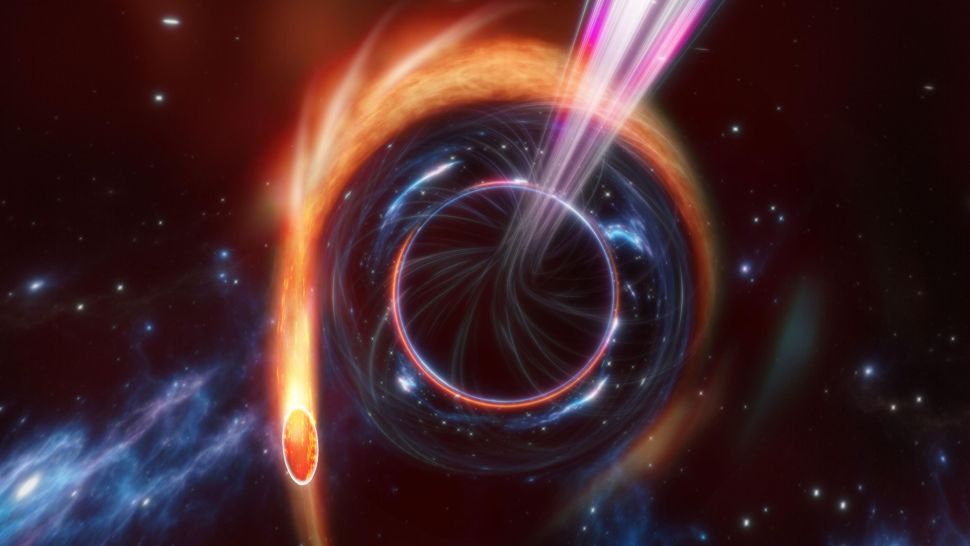
Stars that go too close to black holes experience TDEs. Due to the black hole’s gravitational pull, the star is torn apart by tremendously strong tidal forces. The black hole also ejects plasma and radiation jets from its poles in around 1% of TDEs.
Nial Tanvir, an astronomer at the University of Leicester in the U.K. and co-author on the new research, stated in a statement(opens in new tab) from the European Southern Observatory (ESO), which runs some of the telescopes used in the research, that “we have only seen a handful of these jetted-TDEs and they remain very exotic and poorly understood events.” Therefore, in order to learn how the jets are truly formed and why such a small percentage of TDEs produce them, astronomers are continually looking for these intense occurrences.
The Zwicky Transient Facility (ZTF), a survey telescope in California, alerted researchers to an unusual source of visible light in February, which the ESO Very Large Telescope (VLT) in the Atacama Desert of northern Chile immediately jumped to investigate. This TDE, designated AT2022cmc, was then found. Astronomers frequently employ this dynamic: survey telescopes like the ZTF scan the sky for indications of transient and dramatic phenomena, which more specialized telescopes like the VLT may then pursue, studying in more detail.
The most potent source of electromagnetic radiation in the known cosmos, AT2022cmc first resembled a gamma-ray burst (GRB), whose origins are still unclear. Astronomers trained a number of telescopes on AT2022cmc, including the VLT, which analyzed the event with its X-shooter spectrograph instrument, in order to witness one of these uncommon and enigmatic flashes of light. In total, 21 telescopes, including the Hubble Space Telescope and the Neutron Star Interior Composition Explorer (NICER) X-ray instrument on board the International Space Station, viewed AT2022cmc at various wavelengths of light.
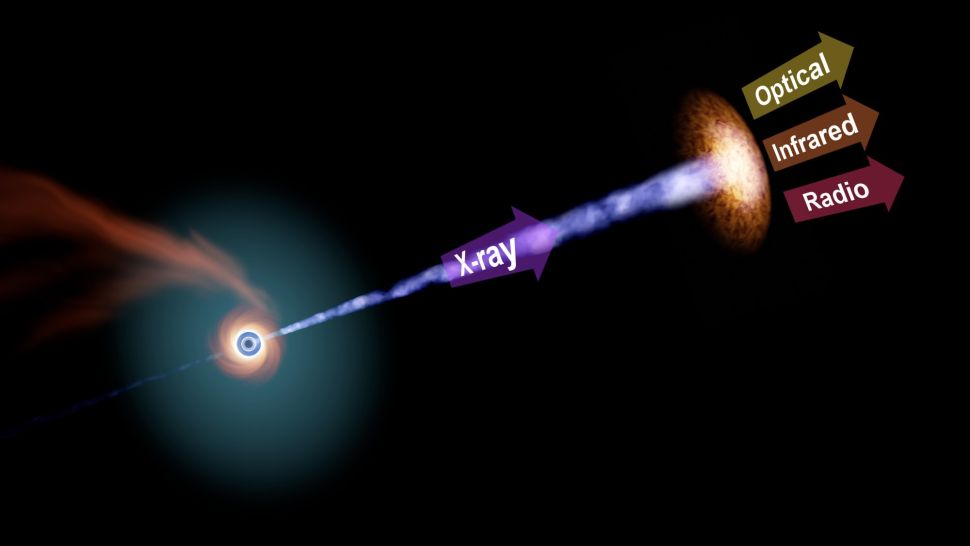
Two odd observations were made using the extensive data. The light’s origin, AT2022cmc, was a record-breaking distance from Earth, and it started traveling when the universe, at 13.8 billion years old, was only a third of its present age. And secondly, it wasn’t a gamma-ray burst.
Dheeraj Pasham, an astrophysicist at the Massachusetts Institute of Technology and the primary author on one of the studies, stated in a statement that “everything appeared relatively normal the first three days.”
The source was too bright, he said of the NICER observations, noting that the signal was still 100 times stronger than the afterglow from any gamma-ray burst detected to far. “Then we looked at it with an X-ray telescope,” he added. It was exceptional, as they say.
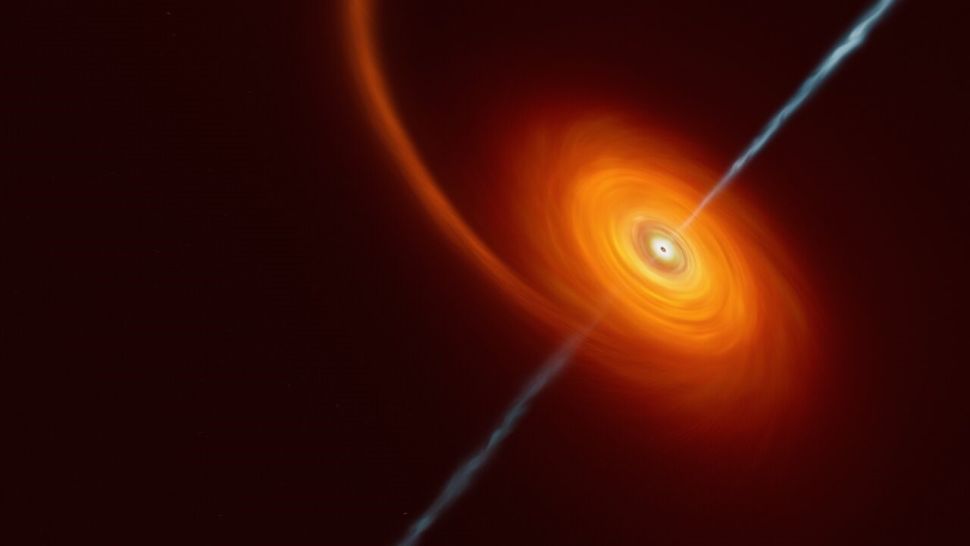
A total of 21 telescopes throughout the world witnessed AT2022cmc in a range of light wavelengths, from high-energy gamma-rays to low-energy radio waves. Astronomers might then contrast this data with observations of other ferocious occurrences, such as falling stars and the potent cosmic explosions known as kilonovas.
Only the very unlikely scenario in which a TDE jet—containing stuff flying at 99.99% the speed of light—points directly at Earth could explain the light profile seen by these telescopes.
According to Giorgos Leloudas, astronomer at DTU Space in Denmark and co-author of the new study, “Because the relativistic jet is aimed at us, it makes the event considerably brighter than it would otherwise look, and observable over a wider span of the electromagnetic spectrum.”
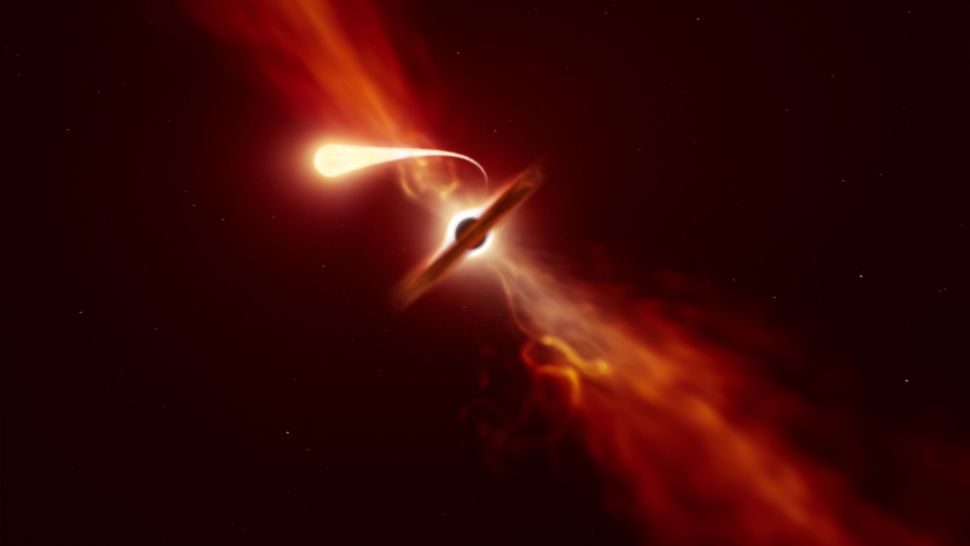
The jet is still rather bright, though, and because of this, astronomers have estimated that the black hole consumes around half the mass of the sun annually, according to Pasham. The volume of the jet also shows that the researchers were able to detect the event at an early stage. We were able to see this occurrence just one week after the black hole began consuming the star because “a lot of this tidal disturbance occurs early on.”
The TDE’s far from Earth isn’t the only component of AT2022cmc that sets records. This is the first observation of a jetting TDE, a sort of severe star-killing event that has previously only been witnessed in high-energy radiation like as gamma-rays and X-rays.
As a result, the detection of AT2022cmc in optical light may open up a brand-new method for discovering these jet-firing TDEs throughout the expanse of space, enabling a closer investigation of these uncommon phenomena and the black holes that cause them.
The research is described in two papers published on Wednesday (Nov. 30), in the journal Nature.
Do not forget to share your opinion with us to provide you with the best posts !



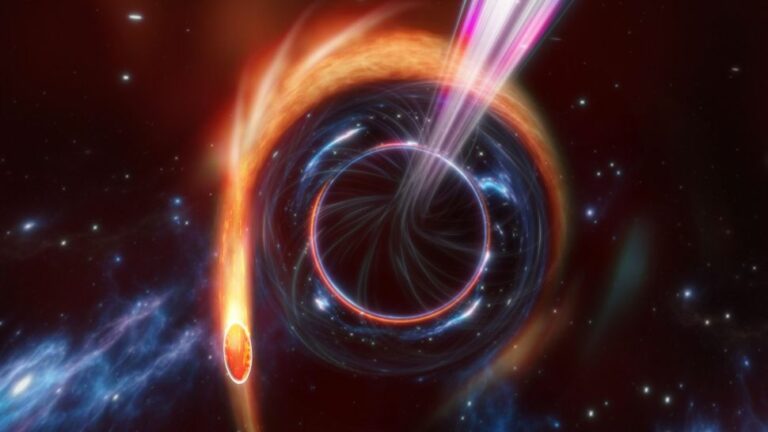
0 Comments